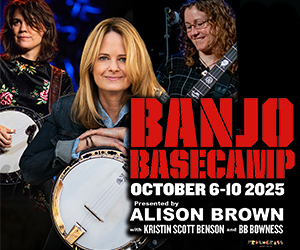Hear It First at Folk Alley ~ The Stray Birds
by Kim Ruehl, for FolkAlley.com
Folk music can be a tricky thing sometimes. There’s a temptation, as an instrumentalist who knows and loves the way their instrument sounds, to follow any fluid emotion through an overreaching solo. When your bow draws against the fiddle strings in such a way that they positively sing, you can run away with it if you’re not careful.
So, there’s a lot to be said for the art of restraint. This is true of any style of music, but particularly in folk music – where the strings sing on their own and the songs are, as a general rule, more sparsely arranged.
A few contemporary artists keep it checked – most famously Gillian Welch and David Rawlings, who have committed themselves to whatever they’re capable of doing with two voices and two guitars. Within those confines, they’ve crafted a career of extraordinary musicianship which few others have managed to match.
The Be Good Tanyas have nailed it across their three albums. Last year, the Milk Carton Kids burst on the scene with their similar approach to duo songwriting, swapping vocal leads and accompanying each other only on harmony vocals and guitar. They’ve displayed a new expertise for delivering exquisite music using only the tools available to their hands and voices.
Now, here come the Stray Birds – a trio based in Pennsylvania with a traditional folk lineup (three voices, banjo, bass, and fiddle) whose only diversions see them picking up a guitar or adding a second fiddle. The songs on their new self-titled album are remarkably stripped-down, written by the two lead vocalist, Maya de Vitry and Oliver Craven. Even the backing vocals are delivered with artful restraint – an “ooh” here, an “ah” there.
Lyrically, they’re songs are about love (“Just Sayin'”) and fear and making bad decisions (“25 to Life”) – all the things folk songs are there to do. They trot and waltz and swing (“No Part of Nothin”) and take an original path to pay homage to the Celtic roots of many folk instrumentals (“Give That Wildman a Knife/Bellows Falls/Waitin’ on a Hannah”).




